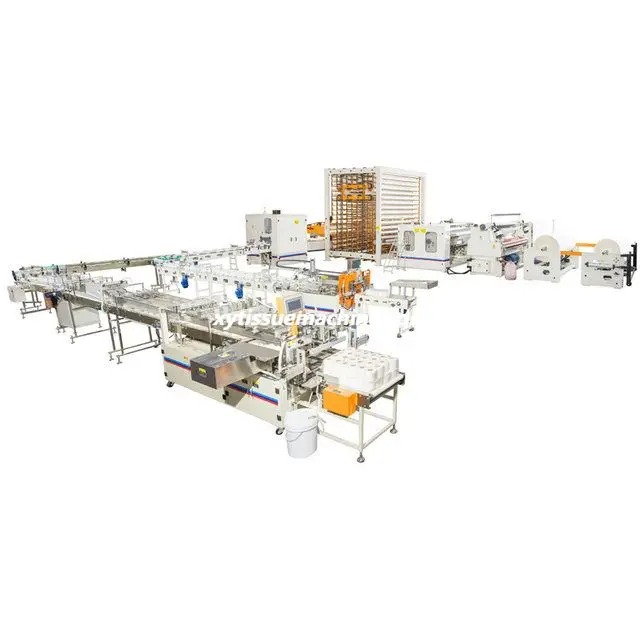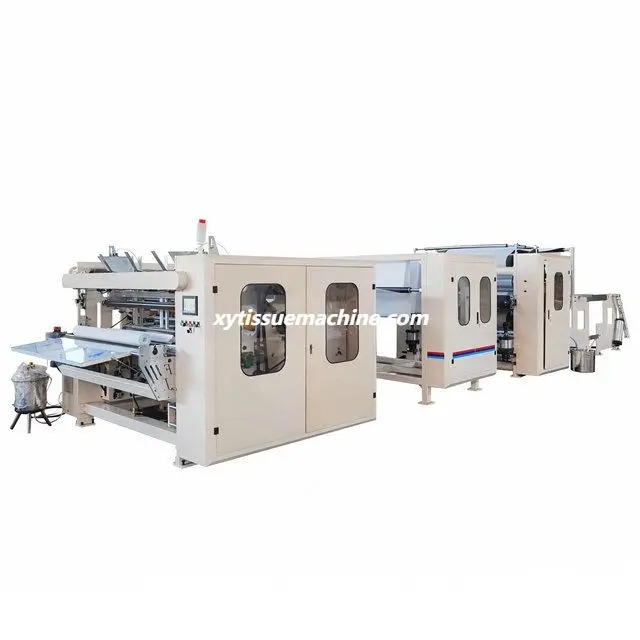Views: 179 Author: Site Editor Publish Time: 2025-09-05 Origin: Site
Paper converting machinery plays a vital role in the global packaging, printing, and stationery industries. These machines transform raw paper rolls or sheets into finished products such as tissue paper, notebooks, cartons, and specialty packaging. Whether you are a manufacturer, investor, or production manager, understanding the types, functions, and selection criteria of paper converting machinery can significantly impact efficiency and profitability. This comprehensive guide will provide in-depth knowledge about paper converting equipment, the production process, industry applications, and factors to consider before making a purchase decision.
Paper converting machinery refers to specialized equipment designed to process raw paper materials into usable products through cutting, folding, printing, laminating, coating, embossing, or binding. These machines are essential in converting large paper rolls—often produced by paper mills—into finished goods suitable for commercial or consumer use. The process involves both mechanical and automated systems, ensuring precision, consistency, and high-speed production.
For example, a tissue converting line might take jumbo rolls of tissue paper and process them into individual toilet paper rolls or facial tissues. Similarly, packaging converting machinery may cut and fold cardboard sheets into cartons or boxes. The variety of products that rely on paper converting equipment is vast, ranging from everyday household goods to high-quality printed materials.

Paper converting machinery can be classified into several categories depending on their function and the end product they produce. Below is a detailed overview of the most common types:
These machines cut large rolls of paper into narrower rolls while simultaneously rewinding them for packaging or further processing. They are widely used in packaging industries, label production, and specialty paper manufacturing.
Used for creating paper napkins, envelopes, or folded brochures, folding and cutting machines handle precision folding patterns and consistent cutting for uniform results.
These machines bond paper with film or another paper layer to create stronger, moisture-resistant, or decorative products. Laminated paper is used in food packaging, posters, and book covers.
Integrated printing units allow manufacturers to add branding, product information, or decorative designs during the conversion process. Flexographic and offset printing are the most common methods.
Die-cutting equipment shapes paper into specific forms, commonly used for labels, packaging inserts, and custom-designed stationery.
Embossing creates raised patterns for decorative or functional purposes, while coating machines apply protective or aesthetic finishes to paper surfaces.
| Machine Type | Main Function | Typical Applications |
|---|---|---|
| Slitting & Rewinding | Cuts and rewinds large rolls into smaller rolls | Packaging, label production, specialty paper |
| Folding & Cutting | Folds and cuts sheets or rolls into desired shapes | Napkins, envelopes, brochures |
| Laminating | Bonds paper with film or another paper layer | Food packaging, posters, book covers |
| Printing Units | Adds graphics or text during conversion | Branded packaging, labels, magazines |
| Die-Cutting | Shapes paper into specific designs | Cartons, labels, custom stationery |
| Embossing & Coating | Adds texture or protective layers | Decorative prints, business cards, high-end packaging |
While each machine has unique mechanisms, the paper converting process generally follows a sequence of steps:
Loading the Raw Material – Large paper rolls or sheets are loaded onto the machine. These materials may vary in weight, thickness, and texture depending on the intended product.
Processing and Modifying the Paper – Depending on the machinery, the paper may be cut, folded, printed, coated, laminated, or embossed. In some cases, multiple processes occur in a single line to save time.
Finishing – Final touches such as trimming, die-cutting, or perforating are added to prepare the paper for packaging or direct use.
Packaging – Finished products are stacked, rolled, wrapped, or boxed for shipment to distributors or end-users.
Automation plays a significant role in modern paper converting machinery, reducing manual labor requirements while improving speed, precision, and product consistency. Advanced models often include computer-controlled settings that allow operators to change product specifications quickly without halting production for long periods.
Selecting the right paper converting equipment is a crucial investment decision that affects production capacity, operational costs, and product quality. Here are key factors to consider:
Determine your target output volume and the type of paper products you intend to manufacture. Some machinery is specialized for certain products, while others offer multi-functional capabilities.
Paper thickness, coating type, and roll width will influence machine compatibility. Using a machine designed for lighter paper on heavy cardboard can result in equipment damage or low-quality output.
Modern machines with digital controls, automated feeding systems, and real-time monitoring can significantly improve efficiency and reduce downtime.
Regular maintenance ensures long-term performance. Choose a supplier that offers training, spare parts, and reliable technical support.
Energy-saving designs can reduce operational costs and support sustainable manufacturing practices.

The adoption of high-quality paper converting machinery offers several benefits for manufacturers:
Higher Productivity – Automated systems can run continuously at high speeds, enabling large-scale production.
Improved Quality Control – Consistent cutting, folding, and printing ensure uniformity across all products.
Cost Efficiency – Reduced waste and optimized resource use lower overall production costs.
Product Versatility – The ability to produce a wide range of paper products opens up new market opportunities.
Customization Options – On-demand printing, embossing, or die-cutting allows for personalized or branded products.
Paper converting machinery serves diverse sectors, including:
Packaging Industry – Producing cartons, food wraps, and branded packaging materials.
Stationery and Office Supplies – Manufacturing notebooks, envelopes, and calendars.
Hygiene Products – Converting tissue and towel rolls for consumer and industrial use.
Printing and Publishing – Creating magazines, flyers, and marketing materials.
Specialty Products – Custom labels, decorative wrapping paper, and event stationery.
The demand for sustainable packaging solutions is also driving innovations in eco-friendly paper converting machinery, enabling the use of recycled paper and biodegradable coatings.
Q1: What is the lifespan of paper converting machinery?
The average lifespan ranges from 10 to 20 years, depending on usage frequency, maintenance quality, and technological upgrades.
Q2: Can one machine handle multiple paper products?
Yes, many modern machines are designed for versatility, but additional attachments or modifications may be required for different product types.
Q3: How fast can paper converting machinery operate?
Speeds vary significantly—from 50 meters per minute for basic machines to over 500 meters per minute for advanced high-speed models.
Q4: Is operator training necessary?
Absolutely. Proper training ensures safe operation, efficient production, and reduced downtime caused by errors.
Q5: How do I maintain paper converting machinery?
Routine cleaning, lubrication, and timely replacement of worn parts are essential. Following the manufacturer’s maintenance schedule is highly recommended.
Paper converting machinery is the backbone of numerous industries, turning raw paper materials into essential consumer and industrial products. With technological advancements, these machines now offer higher efficiency, precision, and flexibility than ever before. Whether you are launching a new production line or upgrading existing equipment, understanding the types, functions, and selection criteria is key to making the right investment. By considering factors such as production needs, material compatibility, and automation features, businesses can maximize efficiency, reduce costs, and deliver high-quality paper products to the market.
1610 Enterprise Building, Wanan, Luojiang, Quanzhou, Fujian, China
Phone: +86-13685949824
Whatsapp: +86-13685949824
Email: elaine@xinyun-engine.com